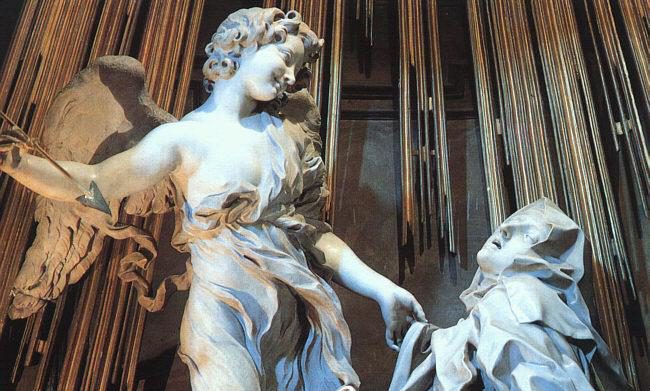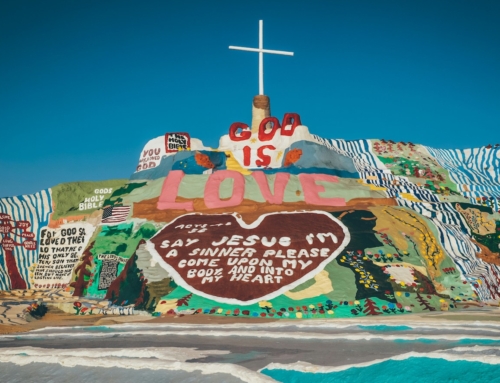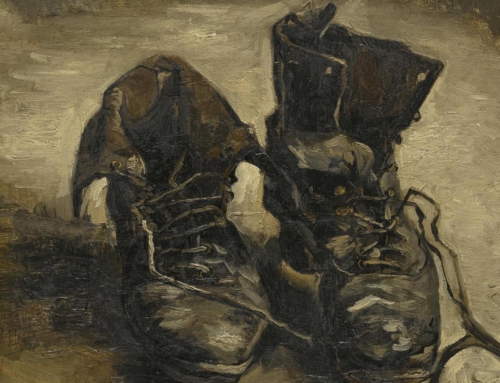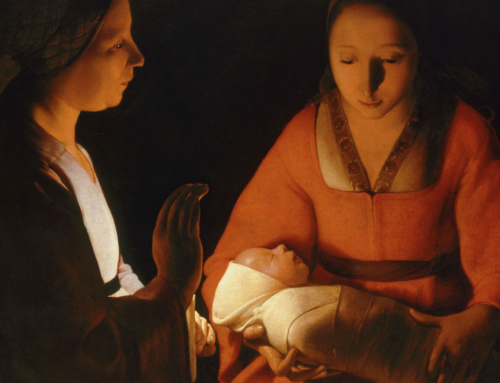I saw in [the angel’s] hands a large golden dart and at the end of the iron tip there appeared to be a little fire. [The] angel plunged the dart several times into my heart . . . . When he drew it out, I thought he was carrying off with him the deepest part of me; and he left me all on fire with great love of God. The pain was so great that it made me moan, and the sweetness this greatest pain caused me was so superabundant that there is no desire capable of taking it away (Teresa of Ávila, Autobiography).
In 1976, the two-time Pulitzer Prize winner and U.S. Poet Laureate (’87-’88) Richard Wilbur published a short poem entitled “Teresa.” The first stanza describes the famous mystical encounter between St. Teresa and an angel with a spear:
After the sun’s eclipse,
The brighter angel and the spear which drew
A bridal outcry from her open lips,
She could not prove it true,
Nor think at first of any means to test
By what she had been wedded or possessed.
Though now we can see that Teresa was “wedded” to God, at the time even she who enjoyed such divine intimacy did not rule out the possibility that she had been “possessed” by some lower power. In case of supposed mystical experiences, St. Teresa writes, “The safest thing, as the Lord told me, is to make known to my confessor the whole state of my soul and the favors God grants me, that he be learned, and that I obey him. The Lord has often told me this.”
The second stanza of Wilbur’s poem contrasts the ecstasy of St. Teresa with the experience of Odysseus’ comrades on the island of Aeaea. In Homer’s Odyssey, the witch-goddess Circe gave the men a drugged draft and changed them into swine: “She struck with her wand, drove them into her pigsties . . . with grunts, snouts . . . off they went to their pens, sobbing, squealing . . . (X, 260-70).” The first line of the stanza understates the contrast with Teresa’s “outcry”:
Not all cries were the same;
There was an island in mythology
Called by the very vowels of her name
Where vagrants of the sea,
Changed by a wand, were made to squeal and cry
As heavy captives in a witch’s sty.
So the poem distinguishes two kinds of ecstasy. The swine in Circe’s sty symbolize the irrational fits and shouts of human animality in revolt. When reason loses control to the emotions and sensuality, the rational animal turns wild. Man becomes a pig.
The second kind of ecstasy results from a knowledge of God. Catholics use the phrase “faith and reason,” but it would be a mistake to infer that some things are reasonable and that faith is not one of them. By faith, we transcend human reason and come to share in the knowledge of God, who is Wisdom itself. When St. John calls Jesus the Word, the Greek word is Logos (from which we derive “logic” and all those names of knowledge ending in “-ology”). If faith is experienced as darkness, it is not because faith is irrational but because it is supra-rational. What Teresa saw was beyond her, but still her encounter with the Word was a real illumination.
A consummate wordsmith, Wilbur develops the theme by noting the similarity between “Teresa” and “Aeaea” (“the very vowels of her name”: e-e-a). Aristotle once remarked that among the animals only man possesses speech (logos), while the others have only the mere voice (phonē). Think of the cow’s “moooo” or the sheep’s “baaaahh,” or even the less reflective of human utterances: “ooooh,” “aaaah,” or “uuuuh.” By using consonants to shape the voice in numerous and various ways, the logical animal (the human being) turns a handful of vowels into a language of hundreds of thousands of words (to say nothing of poems). Likewise, inspired by the Logos, Teresa went on to write profound and detailed books on prayer. The Grecian vagrants, struck by the witch, could only grunt and squeal.
In fact, the wisdom of her teaching and the greatness of her deeds give eloquent witness to the authenticity of her visions. The last stanza of Wilbur’s poem gives voice to that witness.
The proof came soon and plain:
Visions were true which quickened her to run
God’s barefoot errands in the rocks of Spain
Beneath its beating sun,
And lock the O of ecstasy within
The tempered consonants of discipline.
The bulk of those “barefoot errands in the rocks of Spain” went toward the reform of the Carmelites—work that called for extraordinary discipline and uncommon vision. For Teresa, there was ultimately no contradiction between mysticism and intense concentration on the business of daily life, between the delights of prayer and the labors of reviving a late-medieval religious order. In fact, it was her mysticism, or better, her deep friendship with Jesus the Logos, that sharpened her mind and inspired her self-possession.
Nor did Teresa make “spirituality” a pretense for despising “organized religion.” She knew that the Logos had become flesh and established a visible, tangible Church, and that he had wedded the Church to himself and so become one flesh with her. Teresa understood herself as both organized in that body and commissioned to organize the religion of a part of that body, the Carmelite Order. And it is in and through that organized body that the Logos recommends her sanctity to us today.
✠
Image: Gian Lorenzo Bernini, Transverberation of St. Teresa (Santa Maria della Victoria, Rome). Photo by Napoleon Vier, detail (CC BY-SA 3.0).







